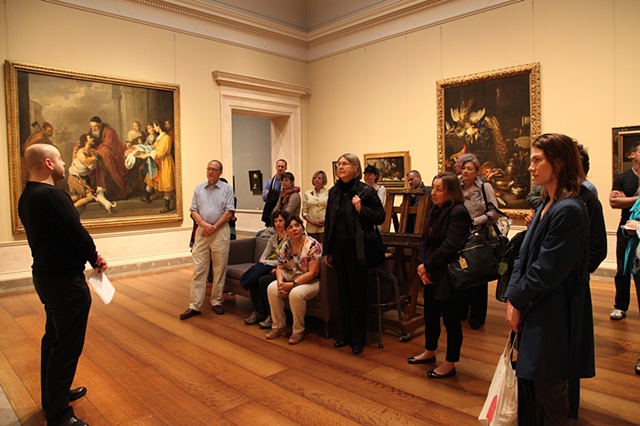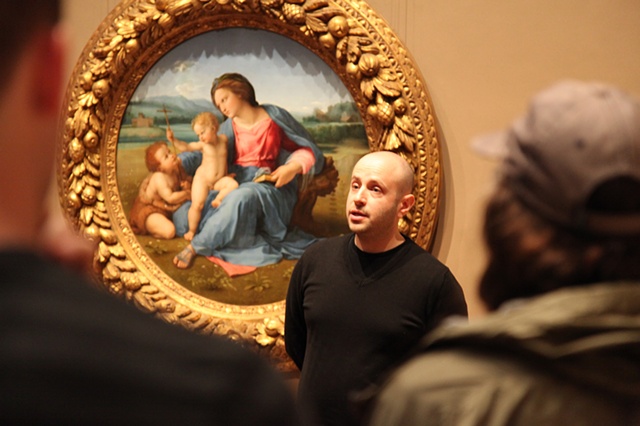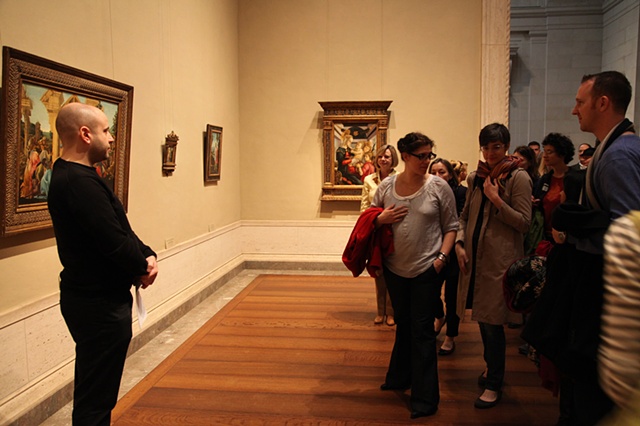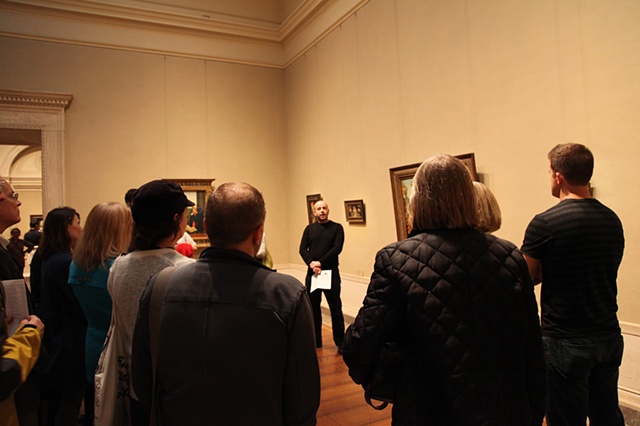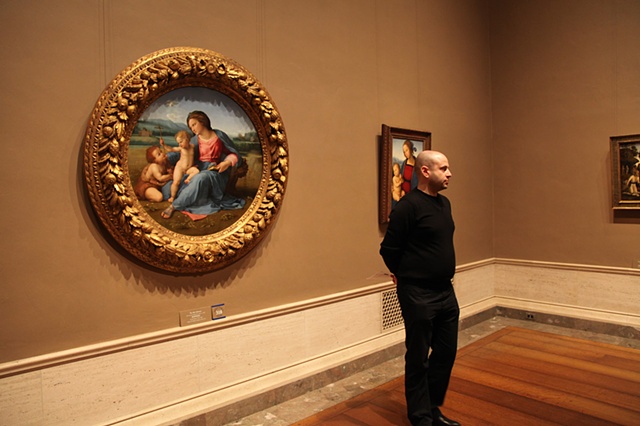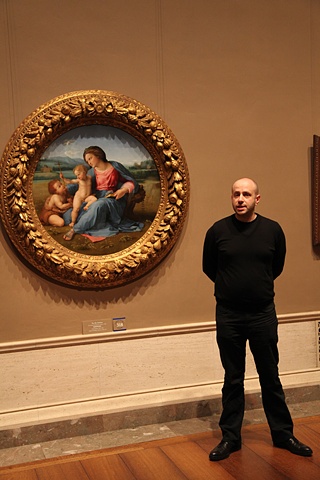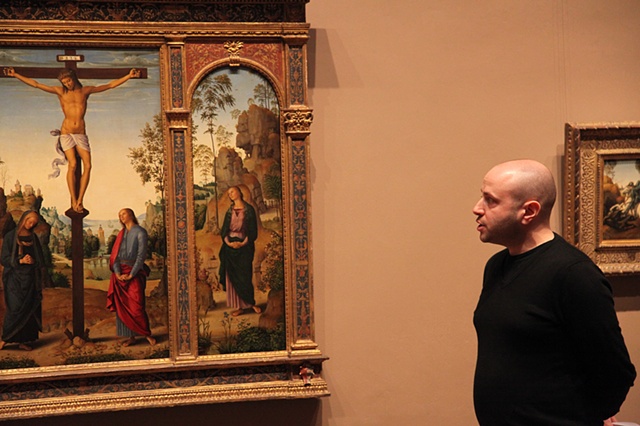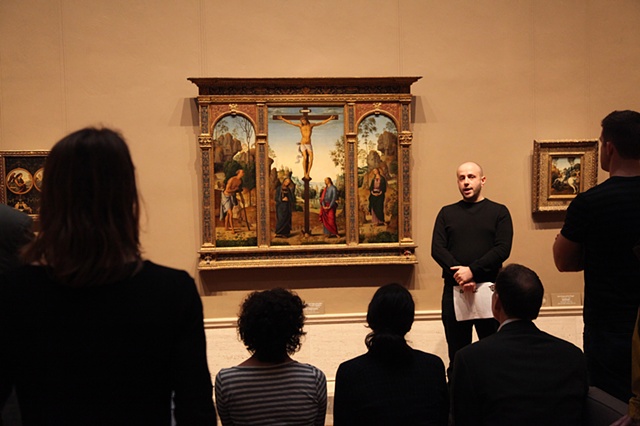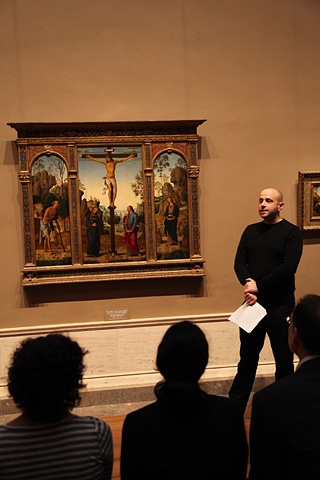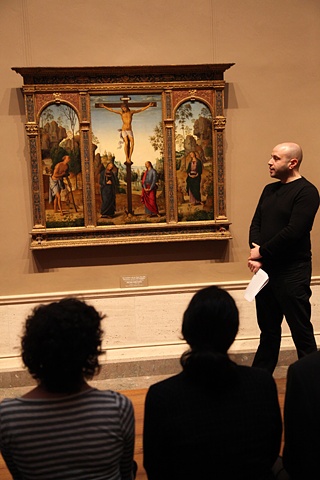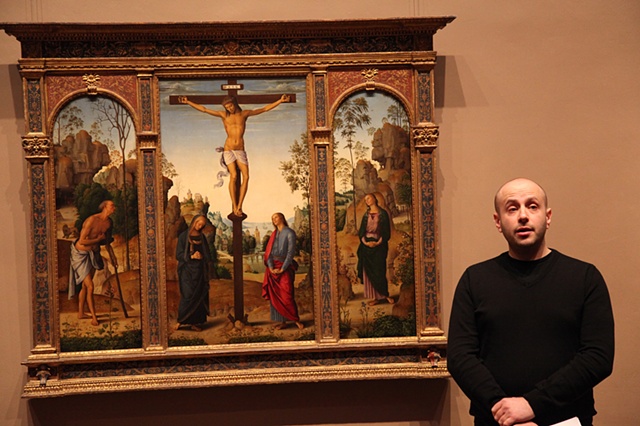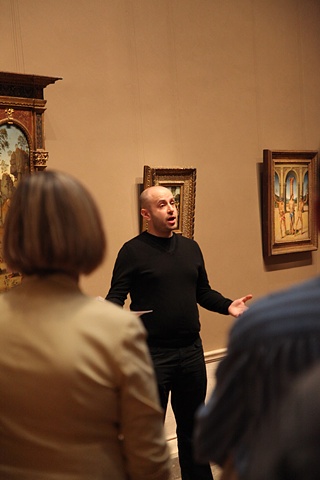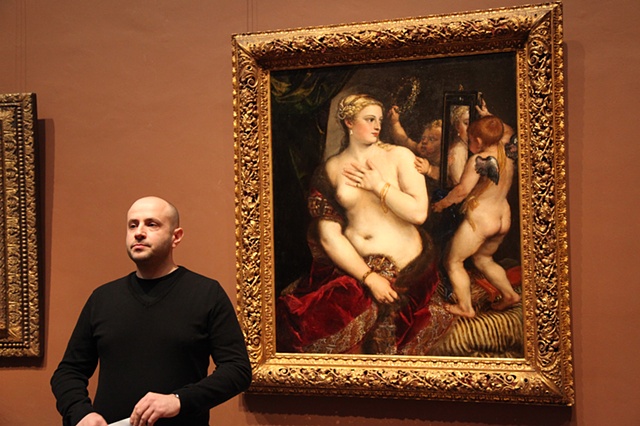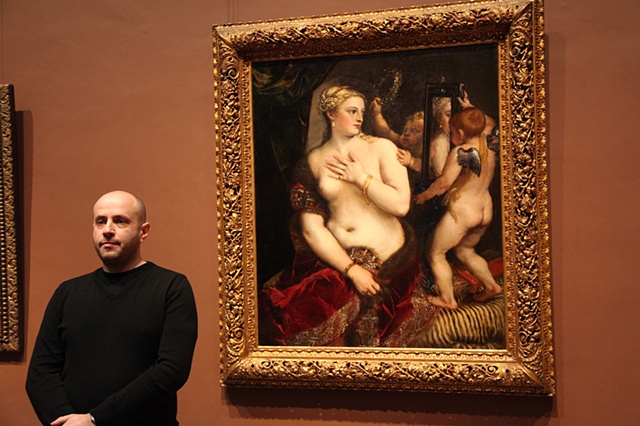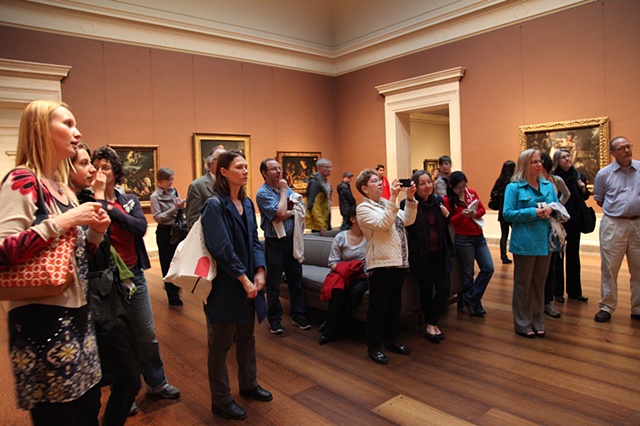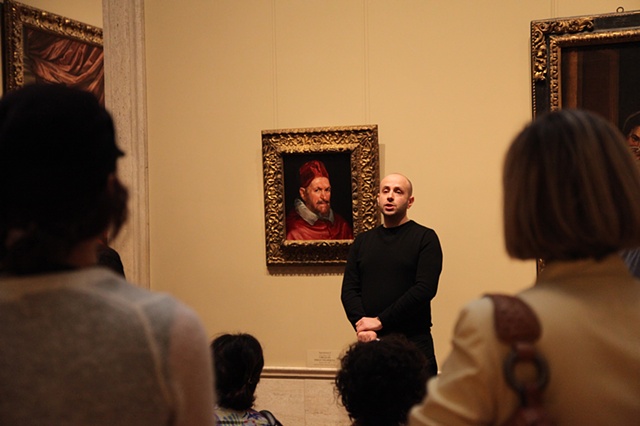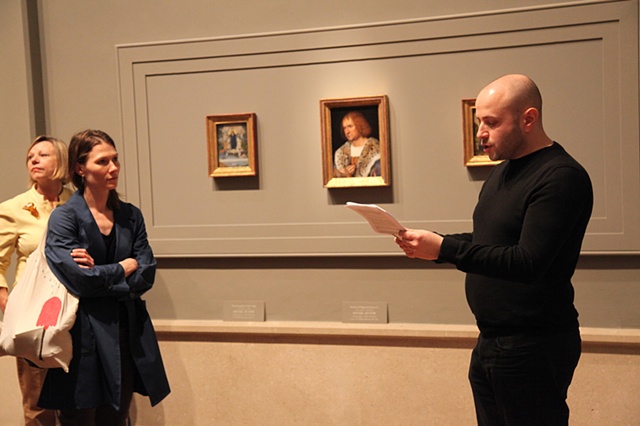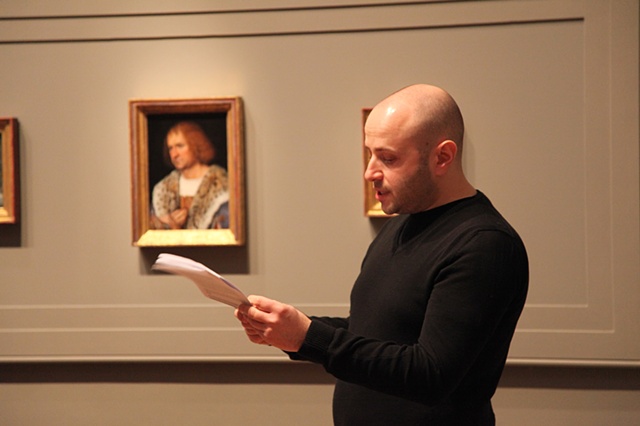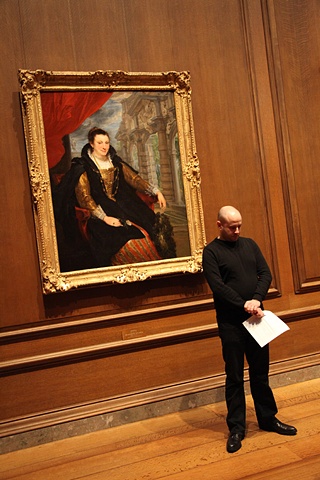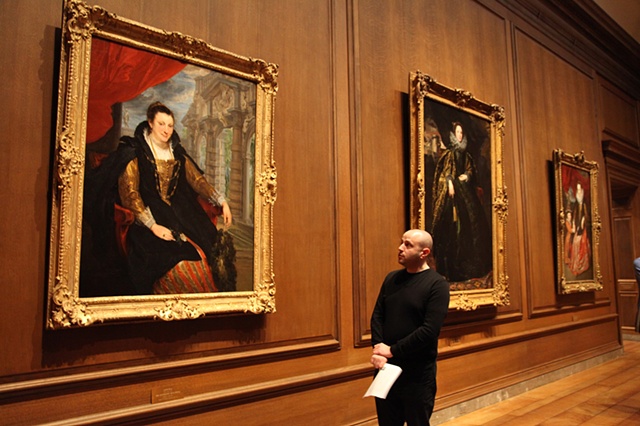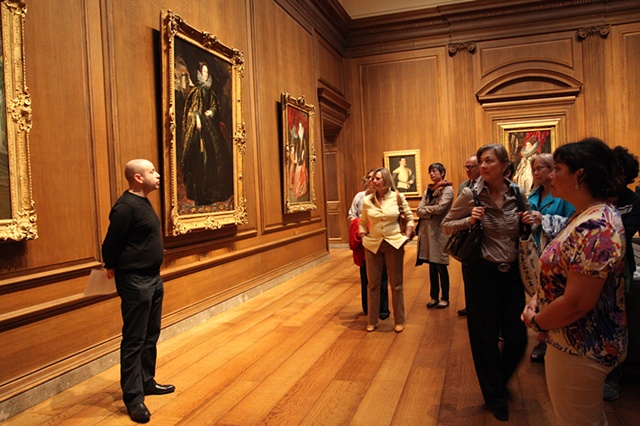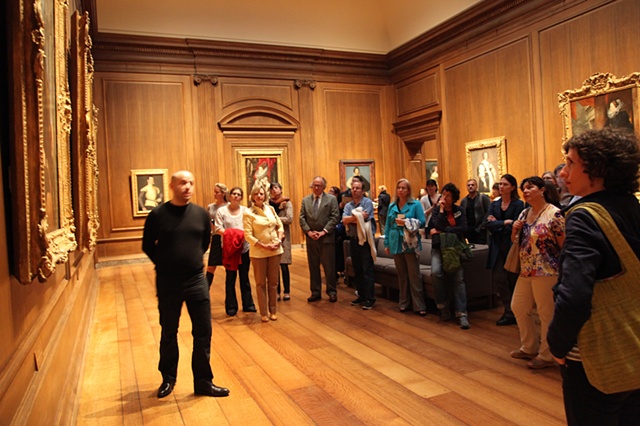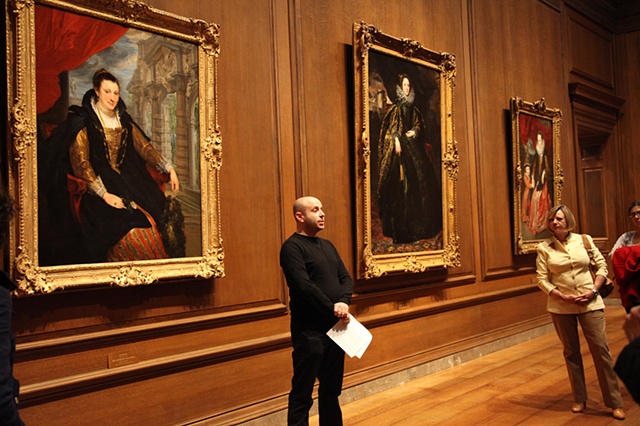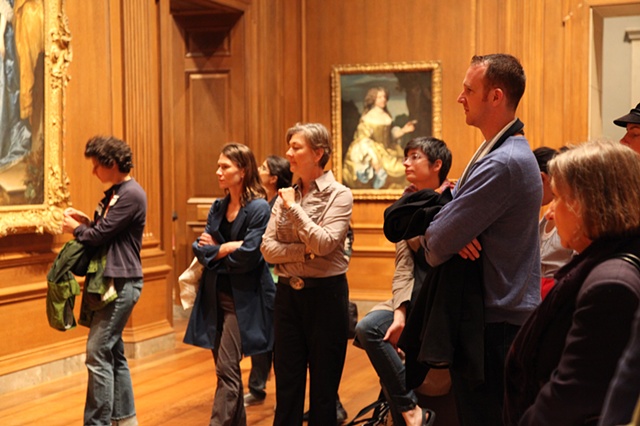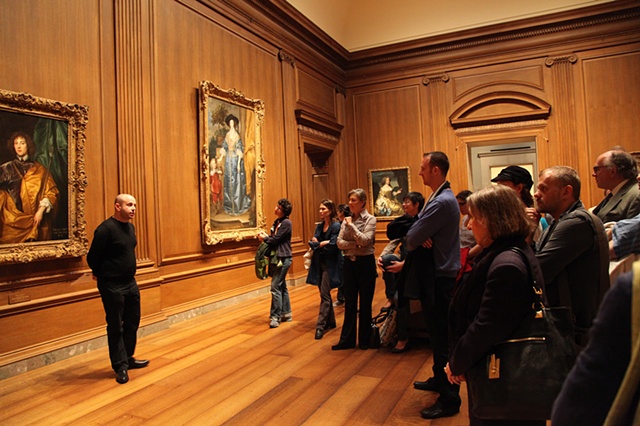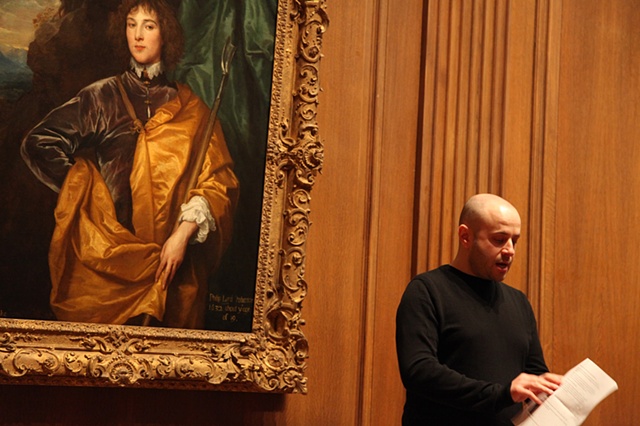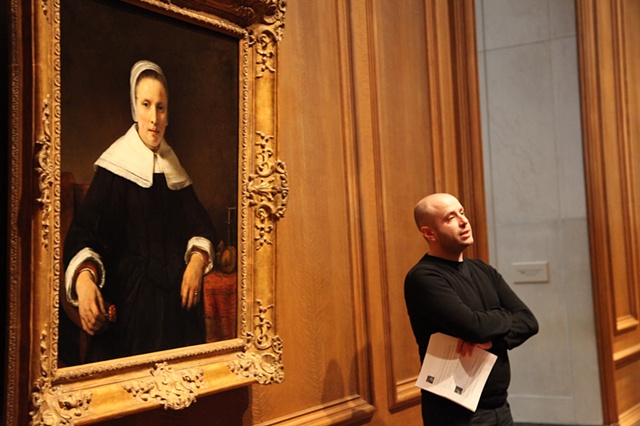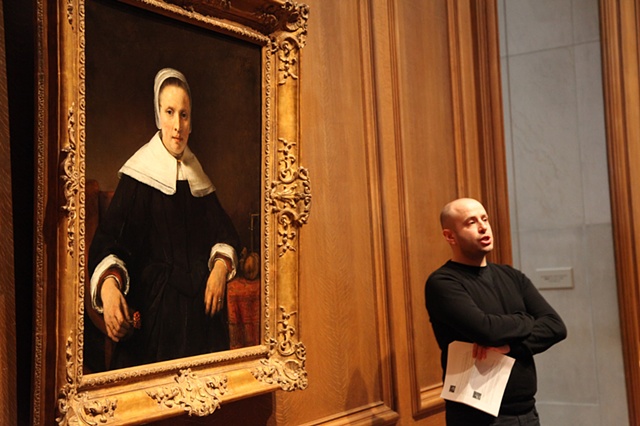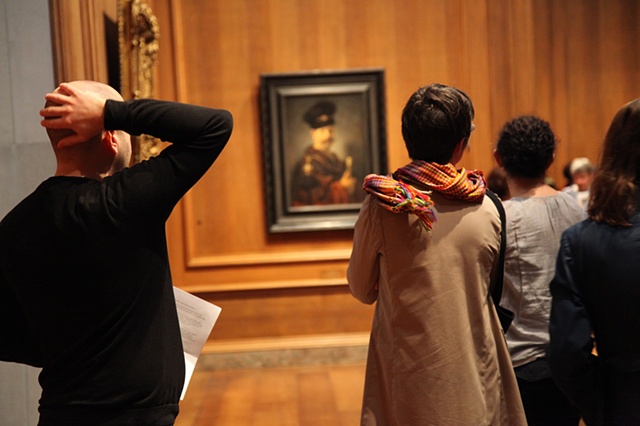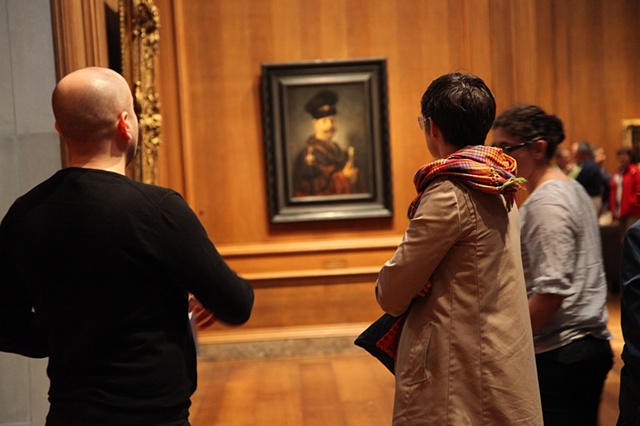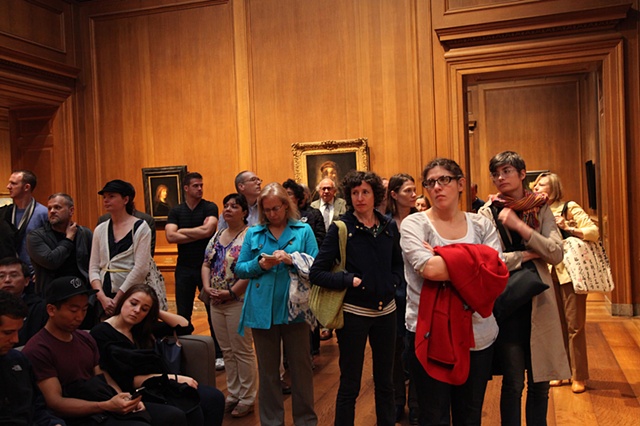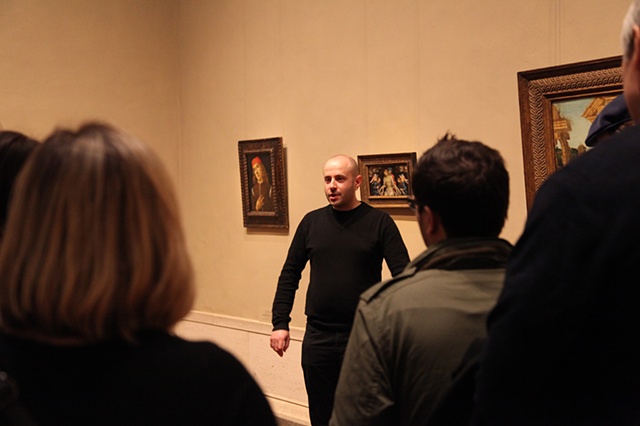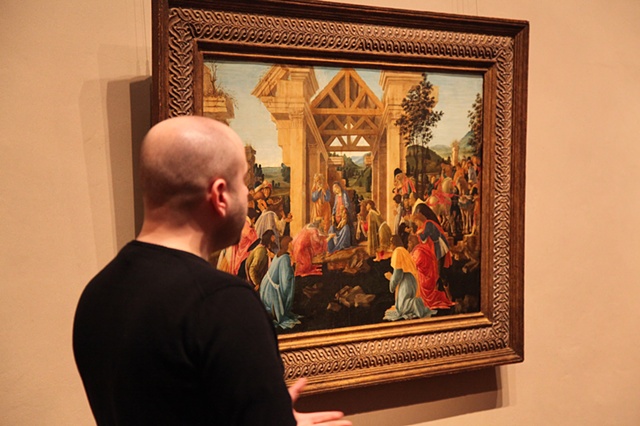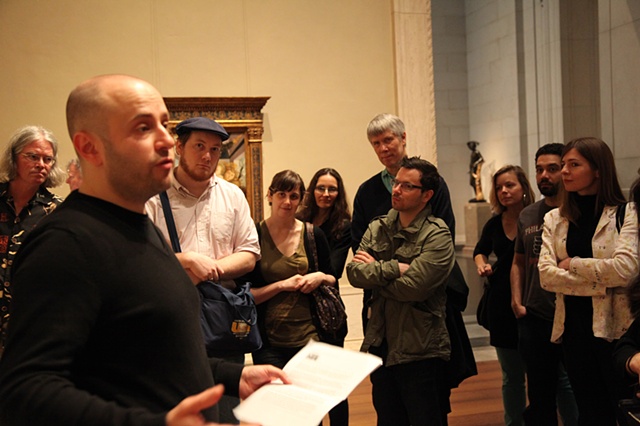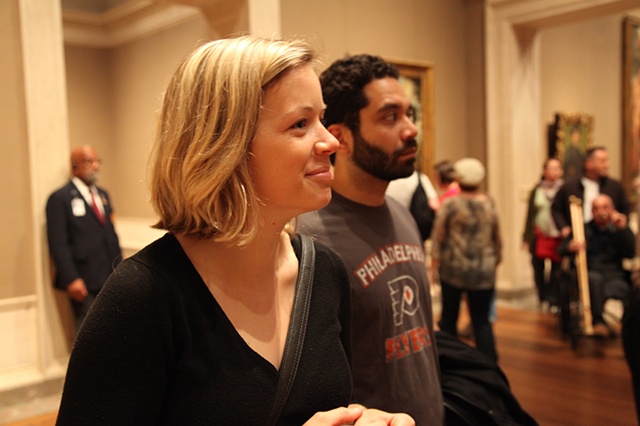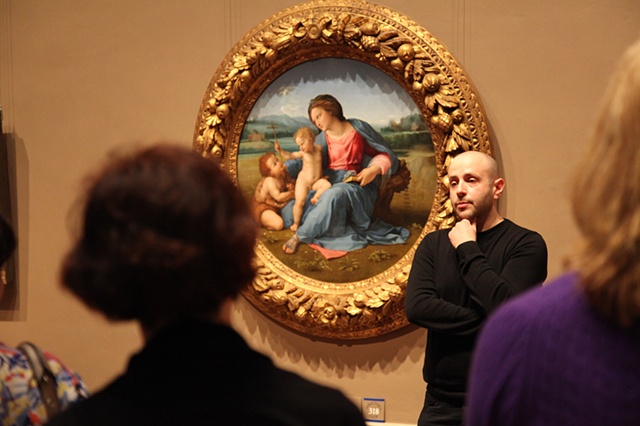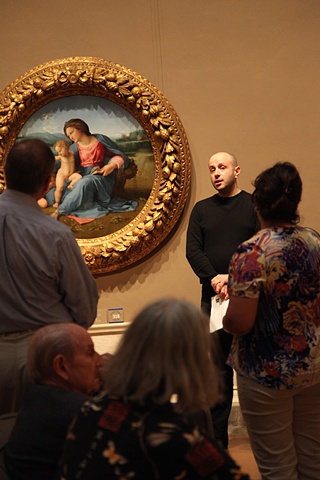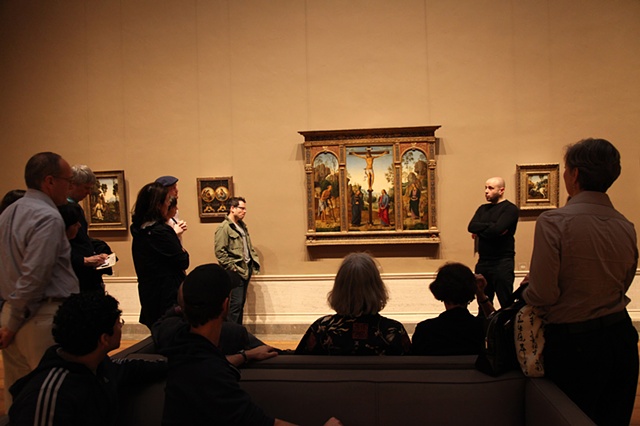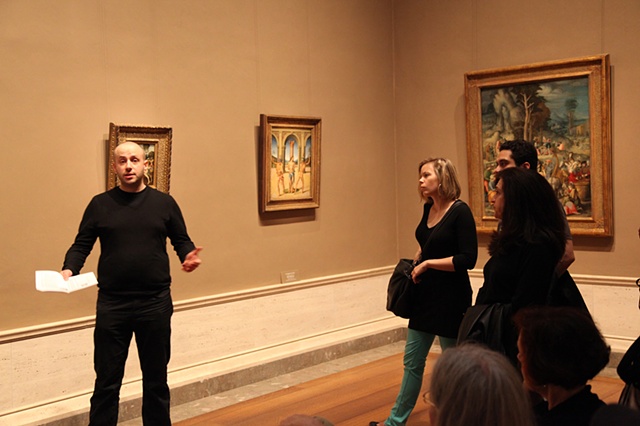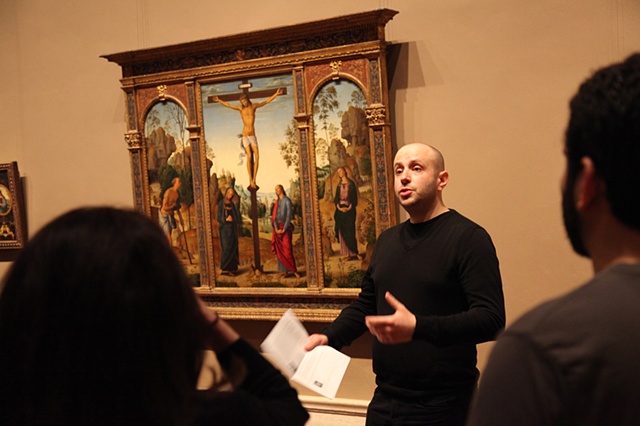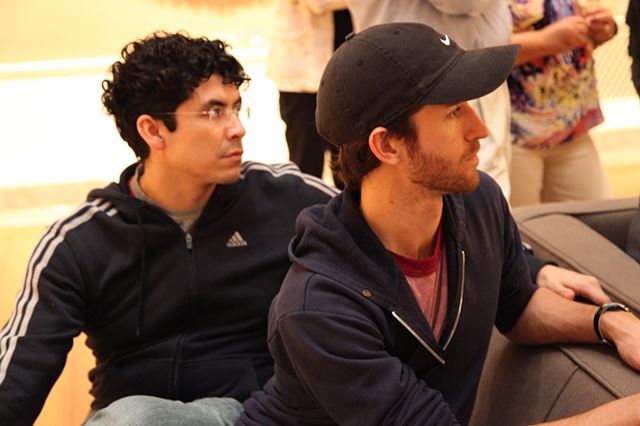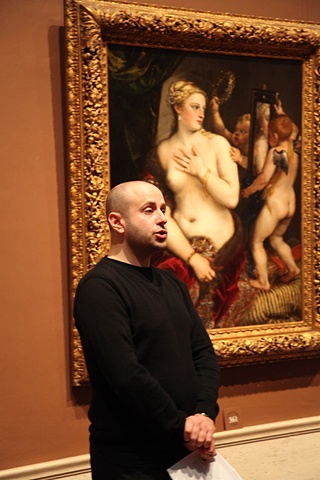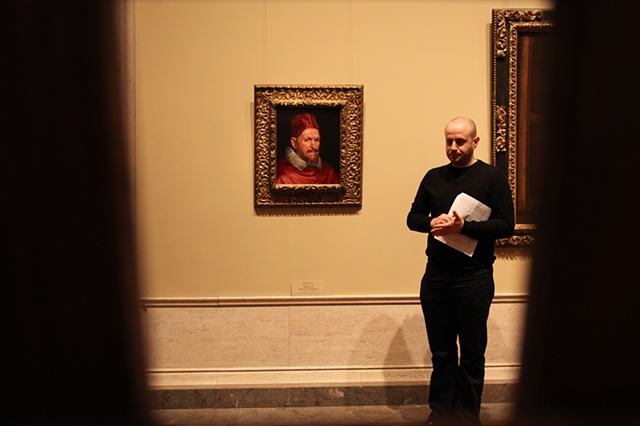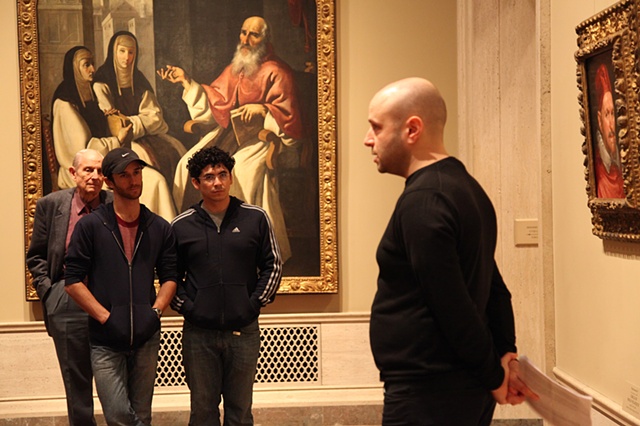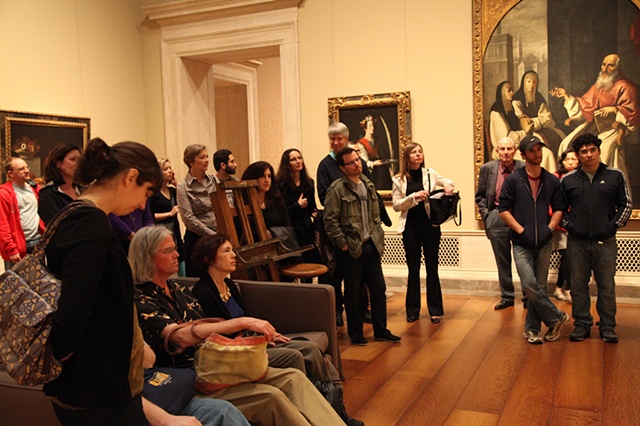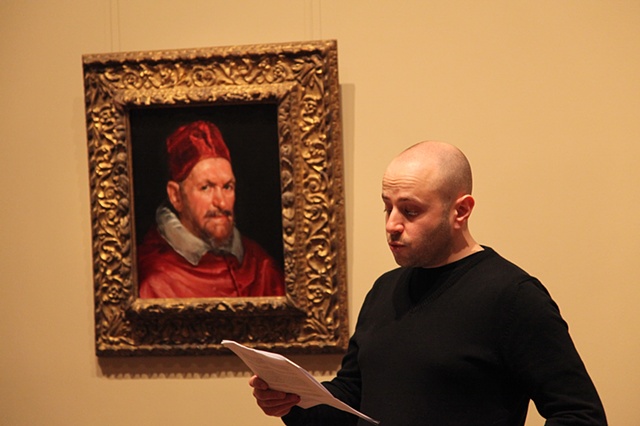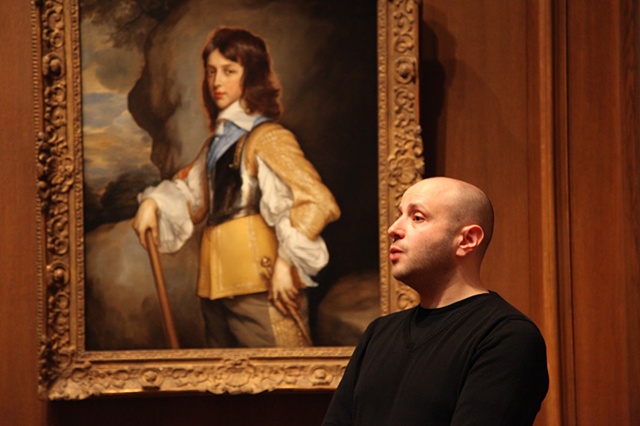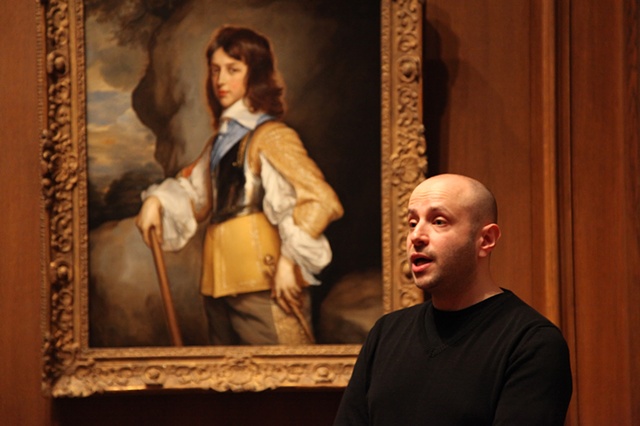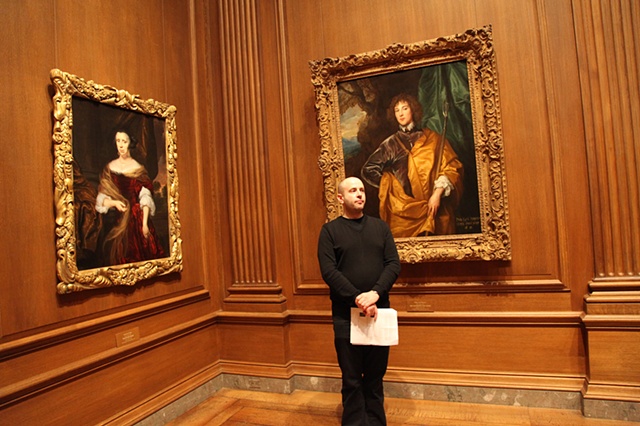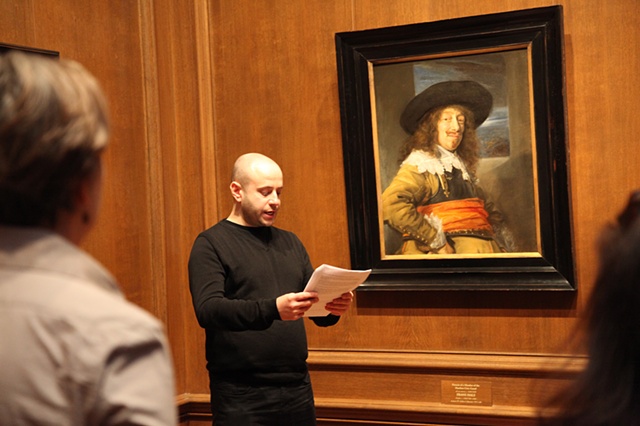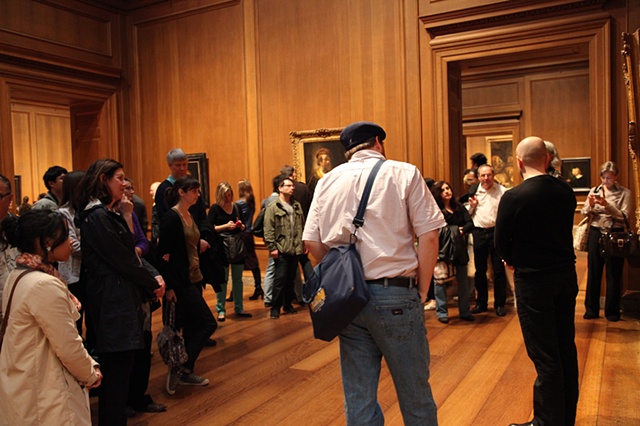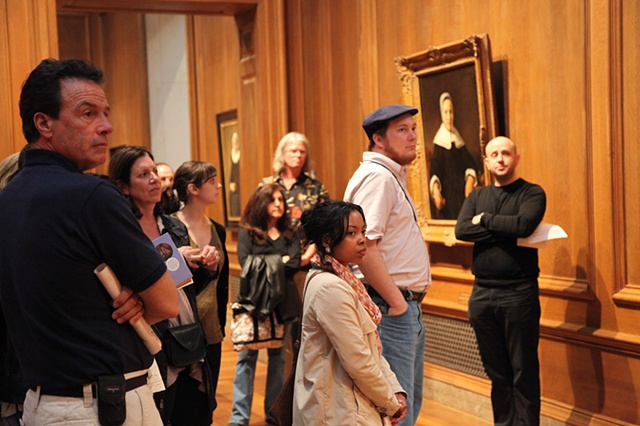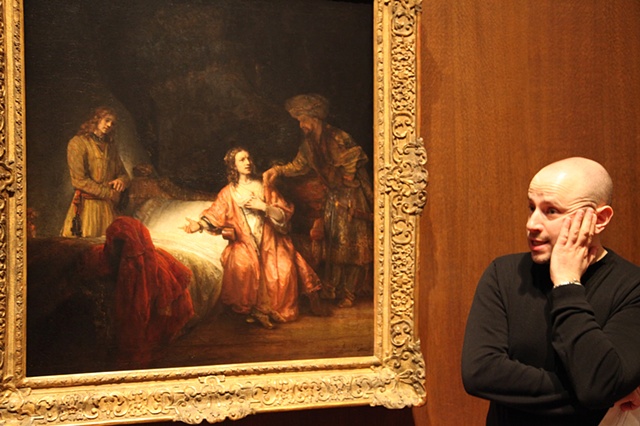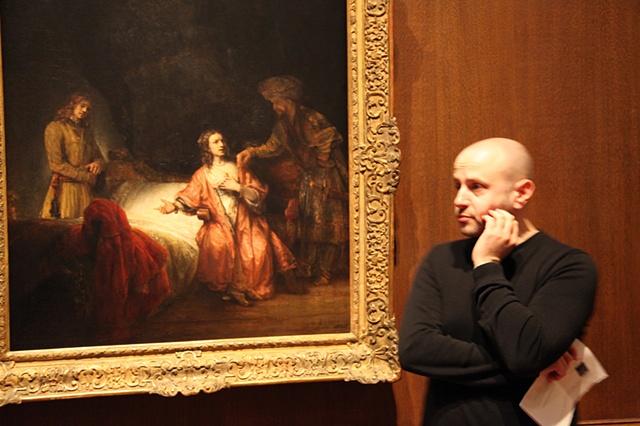Magnitogorsk Tour of the National Gallery of Art, 2012
"The Magnitogorsk Tour of the National Gallery of Art" is a performance in the form of a tour of relevant paintings in the permanent collection of the National Gallery of Art in Washington, DC. The tour focuses on Andrew W. Mellon's purchase of the Hermitage paintings in the context of the history of Soviet industrialization and Soviet-American economic and political relations, with a special focus on the construction of the Magnitogorsk project.
In 1929, the Soviet government initiated an unprecedented campaign to sell art objects abroad in order to earn foreign currency. Proceeds from the sales helped fuel the industrialization of the Soviet Union and specifically, realization of the first Five Year Plan. Strains of the industrialization project on the Soviet economy were telling. Sometime in the late 1920s, the Stalinist regime therefore made a decision to sell artworks for the purchase of tractors and other industrial efforts. By 1931, Andrew W. Mellon, then US Secretary of the Treasury, completed the greatest single art purchase in history: he bought twenty-one masterpieces of Western art for nearly $7 million from the Soviet government, all of which came from the Hermitage Museum collection in today's St. Petersburg. The dollar value of the purchase by Mellon of the Hermitage paintings came to equal roughly 1/3 of the official Soviet exports to the United States in 1930.
The hard currency earned by the Soviet government from the Mellon sale was used to purchase Western technology and as credits for execution of the first Five Year Plan. Most significant was the construction of a major Soviet industrialization project and major propaganda tool: the iron city of Magnitogorsk. Money earned from the sale of just one Hermitage painting, Raphael's Madonna Alba (1.7 million gold dollars), bought more than half of the design of Magnitogorsk. Mellon donated the paintings to the National Gallery of Art in Washington, DC, where they formed the nucleus of the newly formed museum's collection in 1937 and today are on display.
The performance reveals a complex symbiotic and interdependent relationship between American and Soviet historic narratives of the 20th century. "The Magnitogorsk Tour of the National Gallery of Art" reflects upon the interplay of private and public interests, ideology, and compromised intentions on both sides of the Atlantic. Standing before sublime masterpieces of Western art in the National Gallery of Art in Washington, DC, I bring attention to statistics on Soviet industrialization and the construction of Magnitogorsk, questioning the generally accepted narrative of an American-Soviet dichotomy, locating the notion of "historical truth" outside diametrical oppositions, and blurring borders between ideological constructs.
Selected Bibliography
Mark Jenkins, Making Begonias Oppressively Brutish Washington Post, April 6, 2012
Nora Fitzgerald, Roll Up for a Radical History Tour, Russia Now in Washington Post, April 4, 2012
